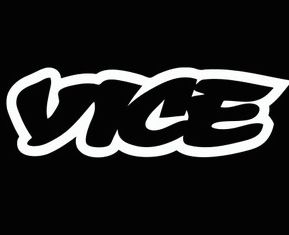Thirty years ago, the world’s largest B2B publisher (then called Reed International) de-merged a nascent exhibitions division from its hundreds of closely-related business magazines in the US and UK. The company’s publishers thought their bosses were mad. But that division, Reed Exhibitions, is now a world leader with 500 events in 40 countries, revenues of £900m and 20%+ profit margins. It has successfully created global exhibition brands, many in the travel, entertainment and construction industries long since abandoned by the parent company’s information businesses. And, when Reed Elsevier spent years trying vainly to sell-off its B2B information group, it resisted all bids for the exhibitions which had expanded rapidly on the back of the growing appetite for face-to-face business meetings in the digital age. Exhibitions, once an ancillary activity of B2B publishing, had turned the tables.
‘Separate and grow’
The impressive Reed Exhibitions has enjoyed more than 25 years of growth under long-time CEO Mike Rusbridge. It’s a success story to study in these digital times, when media groups face hard choices about how to develop new businesses which will, inevitably, compete with their traditional ones. More recently, German newspaper group Axel Springer made a  similar strategic choice when it established online classifieds as a separate division to expand well beyond the domestic market where it had been a long-term leader of ads for cars, jobs and homes. Its online classifieds – across Europe and elsewhere – now account for more than one-third of Springer’s total profit.
similar strategic choice when it established online classifieds as a separate division to expand well beyond the domestic market where it had been a long-term leader of ads for cars, jobs and homes. Its online classifieds – across Europe and elsewhere – now account for more than one-third of Springer’s total profit.
It’s a similar story with the global classified leader Schibsted whose international operations dwarf those of its Norwegian home market. Almost from the start, this Oslo-based group turbo-charged digital expansion by letting its web sites compete with its own newspapers. Digital now accounts for 50% of all Schibsted revenues and more than 75% of profit. And it is currently spinning off VG web TV from the Verdens Gang newspaper group which launched it. VG TV has its sights set on Vice News and Schibsted is making sure it can do so on equal terms.
All these businesses make a simple strategic point about how traditional groups must learn to compete with disruptive insurgents which are unconstrained by the need to defend existing profits.
The trouble is that newspaper and magazine companies are invariably dominated by print people, profits and philosophies. But digital media increasingly needs different (and, yes, younger) people with new skills working in different ways, often with an unruly approach to experimentation and investment. The growth of video, which is coming to dominate digital media, emphasises the way that “new” content skills are diverging sharply from the old. But established media executives never want to let go of digital, despite viewing it too often as ancillary to long-standing print. Almost inevitably, these publishing people tend to over-state their competitive strengths either in launching digital services – or competing with disruptive competitors. That can make it easy for digital newbies.
The Harvard experience
Many traditional companies simply need to bite the bullet and separate digital development from print, in the way that Reed did with its exhibitions in the 1980s. They need to compete with themselves. That is the well-developed view of former Harvard professor Clark Gilbert whose study of disrupted industries persuaded him that the transformation of a legacy company is really a dual transformation where the traditional business must change too. He found that only 9% of disrupted organisations have ever recovered – and that every one of those did so by creating a completely separate unit to take on the disruption: “The evolution of the print newspaper is Transformation A, while the

simultaneous creation of a new business unit is Transformation B. The people in Transformation B think differently, talk differently and see technology as an unrivalled opportunity. You don’t get excellence from either if they’re integrated. A separate digital company won’t ensure success. It is necessary but not sufficient.” But, without it, he contends, overwhelming evidence suggests failure is nearly assured.
Gilbert has been putting his theories into practice for the past four years as CEO of Deseret Media in Utah, where the newspaper Deseret News – and the traditional radio and TV stations – are completely separate from the digital services. And it’s working. The group’s performance is powerful evidence for the former professor’s theories of managerial separation. After laying off 40% of the group’s print staff to fund digital development, Deseret’s traditional and “new media” are both growing, and revenue is now split almost 50:50 – far ahead of almost any comparable business.
The realisation that, in order to survive, print media itself must also change is slowly taking hold. While print will survive widely enough, few publications will ever again achieve the boom-time profits with revenue maximised both from readers and advertisers. Increasingly, it will (mostly) be one revenue stream or the other, so many magazines and newspapers will have to change dramatically, simply to survive. But new publications will also be launched, often by new companies with new business models. Some print will be free and many more will, ironically, be sponsored by digital companies and retailers. That dictates the need for transformation in newspapers and magazines.
Freeing digital from print
Combining print and digital media may sometimes work well, just as some integrated mixed-media companies will continue to be successful, particularly in specialist markets. Print might sometimes also be managed as an ancillary to digital rather than the reverse – and not just in the case of content-rich online retailers like ASOS and Net-a-Porter. But companies where the staffing, organisation and culture are best both for mature print and fast-growing “new media” will become the exceptions.
The fact is that many traditional companies subordinate digital to print without even thinking about it. Current profits talk more loudly than future dreams. And they tend to favour the digitalisation of traditional brands over the creation of new ones. The obvious preoccupation is with digital that will help the hard copy brands, which is alright as far as it goes. But not much scope for the digital natives these companies increasingly need to attract.

The signs are everywhere of vain attempts to modernise media without a real change in managerial mindset. Witness the newspaper-centric complaints that young people are not interested in news, even while Vice Media is building its huge global audience. Or the way that newspapers and magazines are struggling with the demands of content marketing and native advertising, which are the funding ‘secret’ of live-wire companies like BuzzFeed.
Traditional media companies should listen to themselves complaining about their lost readers and advertisers, the difficulty of monetising online audiences, the challenge of multi-platform content, and the imaginary problems of content aggregation from multiple sources. Smart digital-only operators hear it as a sense of complacent “entitlement”, which only highlights the opportunity for insurgents.
However, if companies can rid themselves of such attitudes, there are clearly many ways in which they can achieve the ‘dual transformation’ of companies like Schibsted, Axel Springer and Deseret. It is certainly a good bet that the burgeoning video production units of the largest US magazine publishers – Conde Nast, Time Inc, Meredith, and Hearst – will increasingly be developed as separate businesses empowered to develop digital-only brands, as well as exploiting existing ones.
But many media companies need to rethink their traditional approach to brand ‘champions’. If their corporate leaders continue predominantly to be print-focused editors, then digital development is likely to remain ancillary. The magazine and newspaper editor-in-chief has been the long-standing champion of the brand, reader interests, and (by default) digital innovation.
In a decently-digital company, the person with the clearest insights into readers’ information requirements is as likely to be a research-savvy marketeer as an editor. Similarly, native advertising and content marketing need to be developed as new skills with new people, not as mere ancillaries to display advertising. Anything else risks being half-hearted competition for digitals which have no such historical baggage.
The need to be different
Major organisational change is much easier said than done. And even some of the best companies struggle with the realities. One surprising example of a traditional media company that may be going wrong – even when it seems to be getting it right – is the UK-based Mail Online, one of the world’s largest news sites.
This Daily Mail-owned, celebrity-rich online service is the pride and joy of Britain’s last national newspaper dynasty, created 100 years ago by tabloid pioneer Lord Northcliffe. The DMGT parent company continues to be identified by its UK newspapers, even though 75% of profits now come from B2B media, much of it in the US.

Over the past few decades, the $3bn-revenue DMGT has has been particularly successful with its light-touch investment in new businesses. It has made hundreds of millions of pounds from golden companies as diverse as the financial media group Euromoney, property digital Zoopla, risk information service RMS, and the UK free daily Metro. Even its strident flagship mid-market tabloid, the Daily Mail, continues to be one of the country’s strongest newspapers, with a 1.7m circulation that is only 25% down in the past 14 years. And its profits are now rising on the back of economic growth and weakening competition.
So Mail Online – with 75% readership outside the UK and local editions in the USA, India, and Australia – looks like a convincing digital conquest by a company that knows all about media innovation. It was certainly an early adopter of the web analytics that help it deliver more of the news people want – and as they want it. But it could just be making some classic mistakes.
Despite its 190m unique monthly users and advertising revenues which will hit $90m this year, Mail Online is apparently only just starting to make its first small profits – six years after its international launch and a 10-fold growth in audience. By contrast, the eight-year-old BuzzFeed has been profitable for more than two years – with an audience that is some 20% smaller. But, then, BuzzFeed’s “news-you-can-share” mastery of native advertising is reflected in 2014 revenues that are forecast to beat Mail Online by some 30%.
That’s only part of the story.
Mail Online seems to suffer from being managed directly by daily newspaper people who are busy re-creating a team almost on a historic scale. It has a total of more than 600 people (one-third in the US) including some 400 journalists. BuzzFeed employs fewer than 200 in total. The fact is that the Mail staffing is very traditional. It’s a similar story, incidentally, with the vibrant five-year-old Business Insider whose 26m monthly uniques put it comfortably ahead of digital offerings by the mighty Wall Street Journal and Forbes magazine. Hungry new competitors often are just that.
It’s (sort of) the same in television news where the perennially loss-making Sky News is being upstaged by the highly-profitable upstart Vice News.
Traditional media, to coin a phrase, has to stop looking in the rear-view mirror and concentrate on the road ahead. If they find it difficult to match digital-only competitors, they should either change what they are doing – or give up trying. For digital-only companies, the appetising challenge is to identify legacy groups with neatly interlocking multi-platform strategies which have lost sight of what readers and marketers really want. (That may not, of course, be just what they are having to pay for). And, if the digital strategy looks like a slave (rather than a challenge) to the company’s profitable print media, maybe a disruptive opportunity awaits.
For legacy media, it is time to be alert, self-critical and objective about what customers really need – and how far the real value is obscured by bundled-up profitability. The key question is: What could a digital-only competitor do?
The clue is in the descriptor: “new media”. Go change.
www.flashesandflames.com
MediaBlog
Have you read?
Professor who is reinventing traditional media
The beginning of the end for Reed Elsevier?
A Springer-Daily Mail tie up could create 2 world beaters




